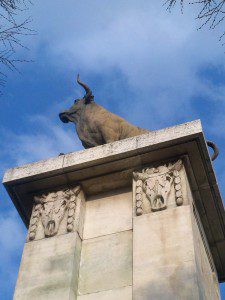 Confused by your dreams? You could try asking tonight for a straight-up dream.
Confused by your dreams? You could try asking tonight for a straight-up dream.
Let me explain. Some dreams take a lot of tending. We need to walk with them and around them for a while, letting different layers and possible meanings surface in their own time. We may need to get feedback from others who are active dreamers and know how to offer their associations in the right way. We can’t get our heads around certain dreams because they are experiences of a deeper reality. We can’t fit experiences of the deeper reality into our heads; we need to get our heads into the deeper reality. One way to do that is to learn to travel – in a lucid, wide-awake shamanic journey – through the doorway of a remembered dream to enter a deeper space, have an adventure, and bring back gifts.
All great stuff. But sometimes we’d like a dream that is a straight shot. And sometimes we are gifted with a dream that requires no interpretation, no discussion, no rocks and no soda.
In the Hawaiian language, such a dream is called a “straight-up” dream (moe pi’i pololei) . The dream is clear. It may be a vision of things happening at a distance, or in the future, in a quite literal way. It may be an encounter with a god or spirit. There are no symbols to decipher, no deceptions, no analysis required. The straight-up dream is what it is.
It may, of course, require action. If we don’t do something with our dreams, to bring their energy and guidance into our everyday world, we do not dream well. This is something traditional dreaming cultures understand.
I love that Hawaiian term, straight-up dream, and enjoy using it in my classes and dream-sharing circles, where newbies will sometimes be temporarily befuddled, wondering if I am proposing an early cocktail.
A note on the Hawaiian vocabulary of dreaming. How much a culture understands of the practice of dreaming is reflected in the variety and specificity of the terms it uses for different types of dream experience. The Hawaiian language contains an especially rich, and current, vocabulary for these things.
A general word for “dream” in Hawaiian is moe’uhane. This may be translated as “soul sleep” but is better understood as “night experiences of the soul”, since for traditional Hawaiians, dreaming is very much about traveling. The soul makes excursions during sleep. It slips out of the regular body, often through the tear duct, described as the “soul pit” and travels in a “body of wind”. During sleep the dreamer also receives visitations from gods (akua) and ancestral guardian spirits (aumakua) who may take the form of a bird or a fish or a plant.
Like all practical dreamers, the Hawaiians recognize that there are big dreams and little dreams. You don’t want to pay too much attention to a “wild goatfish dream”(moe weke pahulu), which is caused by something you ate or how fast you ate it. The colorful term is derived from popular belief that eating the heads of goatfish – at other times a delicacy – in the wrong season, when bad winds are blowing, causes sickness and troubling but meaningless dreams. On the other hand, you want to recognize that a dream may contain the memory of a trip into the future that can give you information of the highest practical importance.
There are “wishing” dreams (moemoea) that show you something you are pining for, which may or may not be attainable in ordinary reality. There are “revelations of the night” (ho’ike na ka po) that carry the power of prophecy.
A most interesting category of Hawaiian dreams are those – believed to be gifts of the guardian ancestral spirits – that are given to promote the healing of relations within a family or community. Dreams are also given by the aumakua to promote personal healing.
The Hawaiians pay special attention to visions that come on the cusp between sleep and waking (hihi’o) believing that these are especially likely to contain clear communication from the spirits and “straight up” glimpses of things that will unfold.

